On 20 July 1969, astronaut Neil Armstrong and Buzz Aldrin took their first steps onto the surface of the Moon, making Apollo 11 the first successful mission to land humans on the lunar surface. It was the first time human feet had been planted on another planetary body, and Apollo 11 would also offer the opportunity of bringing back samples of the Moon for study on Earth.
While the efforts of the Mercury Seven astronauts had not matched those of the Soviet Union at the time, NASA had had now overtaken the USSR and achieved its goal, winning the Space Race and making history in the process.
By 16 July 1969, Cape Kennedy (now known as Cape Canaveral) had been filled with hundreds of thousands of people pouring into the area in cars, buses, boats and planes ready to watch the launch of Apollo 11.
Most came to cheer, a few to protest, but everyone who gathered on the Cape that day knew that they were about to bear witness to one of the biggest moments in human history.
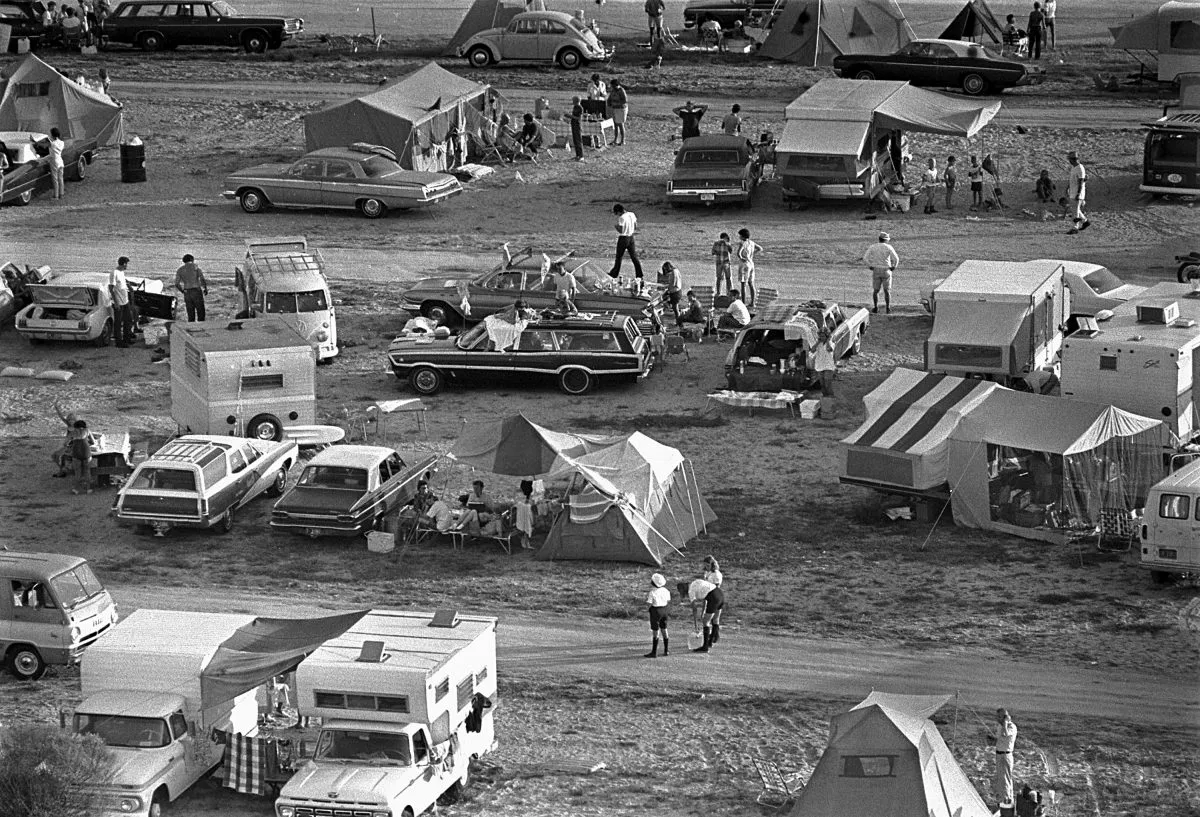
Apollo 11 was about to launch on its way to land the first ever humans on the Moon.
At 9:23am local time, the bright light of a rocket began to glow on the horizon, slowly rising up into the sky.
While people on the ground cheered and burst into tears, for the three astronauts on top of the Saturn V rocket, things were much more subdued.
- How the Apollo moonlandings changed the world forever
- Podcast: talking Apollo moonwalkers with author Andrew Smith
While previous Apollo missions had been fairly light-hearted, everyone knew this was the big one.
Gone were the candy and cartoon themed names for the command module and lunar module – the crew of Apollo 11 had given theirs the patriotic names Columbia and Eagle respectively.
Mission brief
Launch date: 16 July 1969
Launch location: Launch Complex 39 A
Landing location: Sea of Tranquillity
Time on surface: 22 hours, 37 minutes
Duration: 8 days, 3 hours, 18 minutes
Return date: 24 July 1969
Main goals: land humans on the Moon and return them to Earth, gather rock samples, deploy lunar laser ranging experiment
Firsts: human landing on the Moon, first moonwalk
Menu: Bacon cubes, sugar cookies, peaches, pineapple-grapefruit drink, coffee
Three hours after launch, the spacecraft left Earth orbit and began the three-day journey to the Moon.
The previous Apollo missions had rehearsed the procedures for lunar transit, so they were now familiar.
First, the crew gave the Eagle its wings by extracting the lunar module from its launch position behind Columbia, allowing them to move between the two.
The trio spent the rest of the journey checking over every system and preparing their gear, only stopping to eat, sleep and make the occasional colour TV broadcast, bringing all of humanity along on the adventure.
Ready for descent
The crew arrived in lunar orbit on 19 July, and then all too quickly the big day came around.
On 20 July, 100 hours and 12 minutes after leaving Earth, Commander Neil Armstrong and lunar module pilot Buzz Aldrin crossed over into Eagle and undocked from Columbia.Their destination: the lunar surface.
For two and a half hours, the descent towards their selected landing site in the Sea of Tranquillity went smoothly.
Aldrin kept an eye on the instruments, reading off seemingly impenetrable strings of numbers, which Armstrong was able to decode to guide the lander down to the surface.
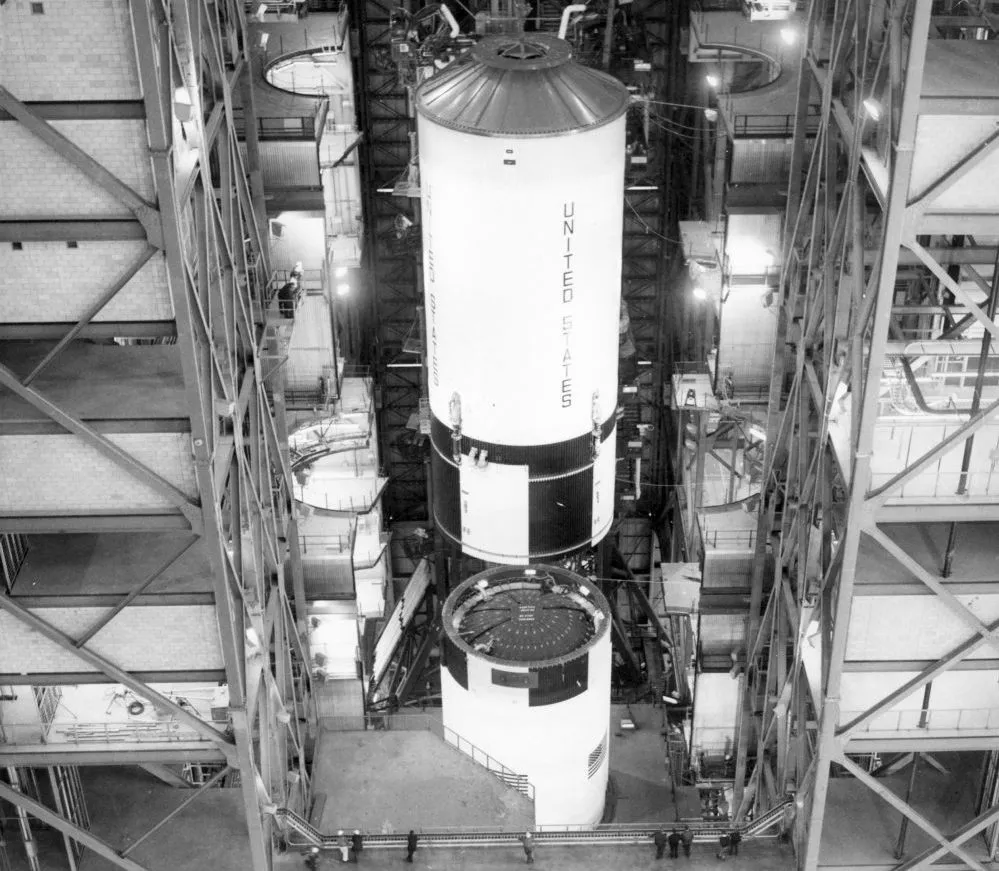
Then five minutes before they were due to touch down, when they were 9,000m away from the surface, an alarm went off.
Neither Aldrin nor Armstrong had ever come across the error, a 1202, in their training.
Ground control had no idea what the error code meant either.
Should they abort? At this late stage aborting would be a dangerous option. A few moments later, while mission controllers were still frantically looking up the error in their manuals, a second alarm went off.
Feeling the weight of the world urging them to complete the landing, mission controllers scrambled to reach a judgement on whether to abort.
It was guidance officer Steve Bales, acting on the information of back-room specialist Jack Garman, who told the capsule communicator Charlie Duke in Houston that he could give the all clear: “We’re ‘Go’ on that alarm,” came the call to Eagle.
While Aldrin was trying to sort out what would turn out to be a minor software fault, Armstrong had his own problems. They had overshot the predicted landing zone.
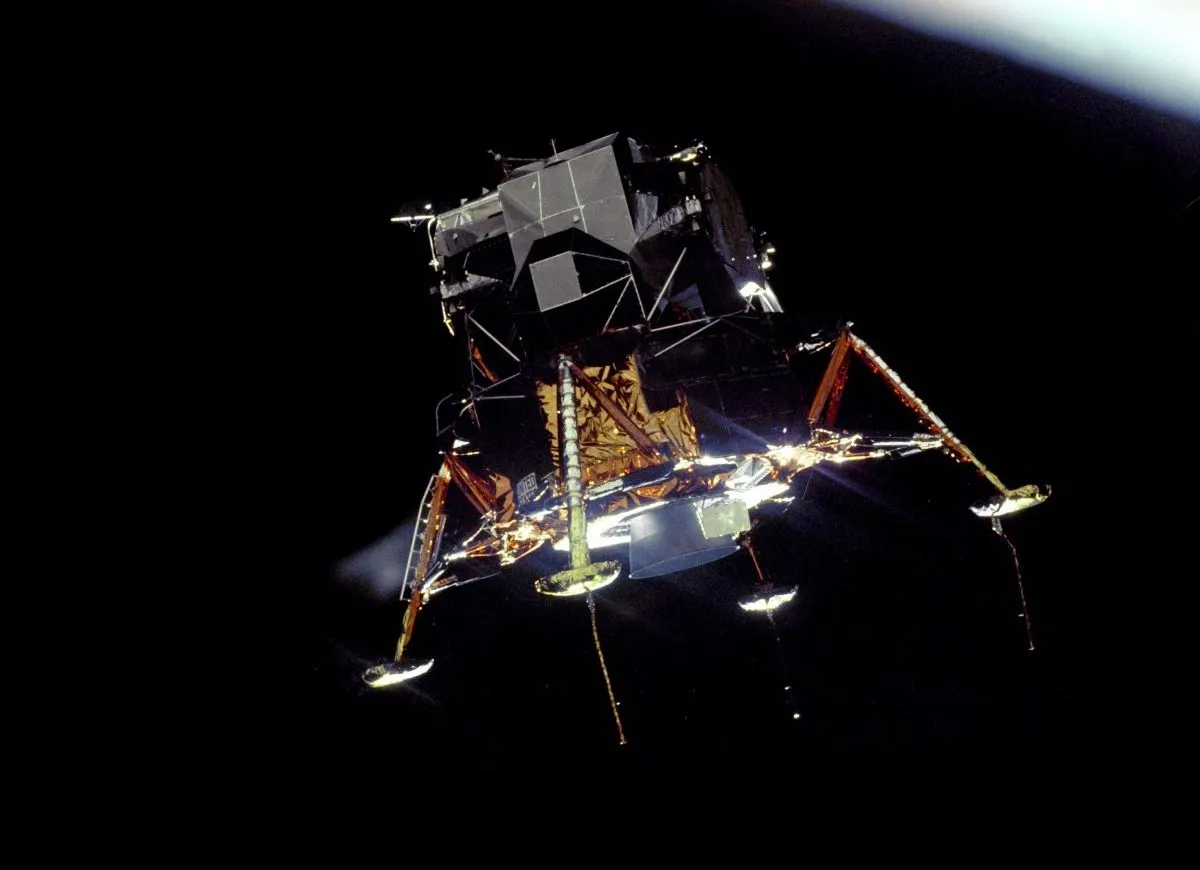
Instead, they were approaching a vast crater field littered with car-sized boulders – if they tried to land now they would almost definitely crash.The dial indicated there was just one minute of fuel left in the tank before they would be forced to either land or abort, if an abort was even possible this close to the surface.
Armstrong levelled off the descent, skimming just over 100m across the surface, looking out from the window for a place to land.
Touching down
With less than 30 seconds of fuel left, the commander found a smooth spot on the grey landscape below.
As he neared the surface, the engines threw up dust.
Armstrong flew the last few metres blind, waiting for the blue ‘contact light’, indicating the lander leg had touched the surface.
It came on: the Eagle had landed.
Disaster almost struck a third time when ice blocked a fuel line shortly after landing.
Fearing that the build-up of pressure could damage the ascent engines and prevent take off, the crew prepared to abort, but were able to clear the line before anything ruptured.
The pair were scheduled to rest for a few hours before the moonwalk, but how could they sleep knowing they were on the verge of one of the most anticipated events in human history?
Four hours after landing on the surface, the pair were ready to head outside.
Back on Earth, one fifth of the world’s population watched the images being sent from a camera suspended beneath the lander, showing the bottom rungs of the exit ladder.
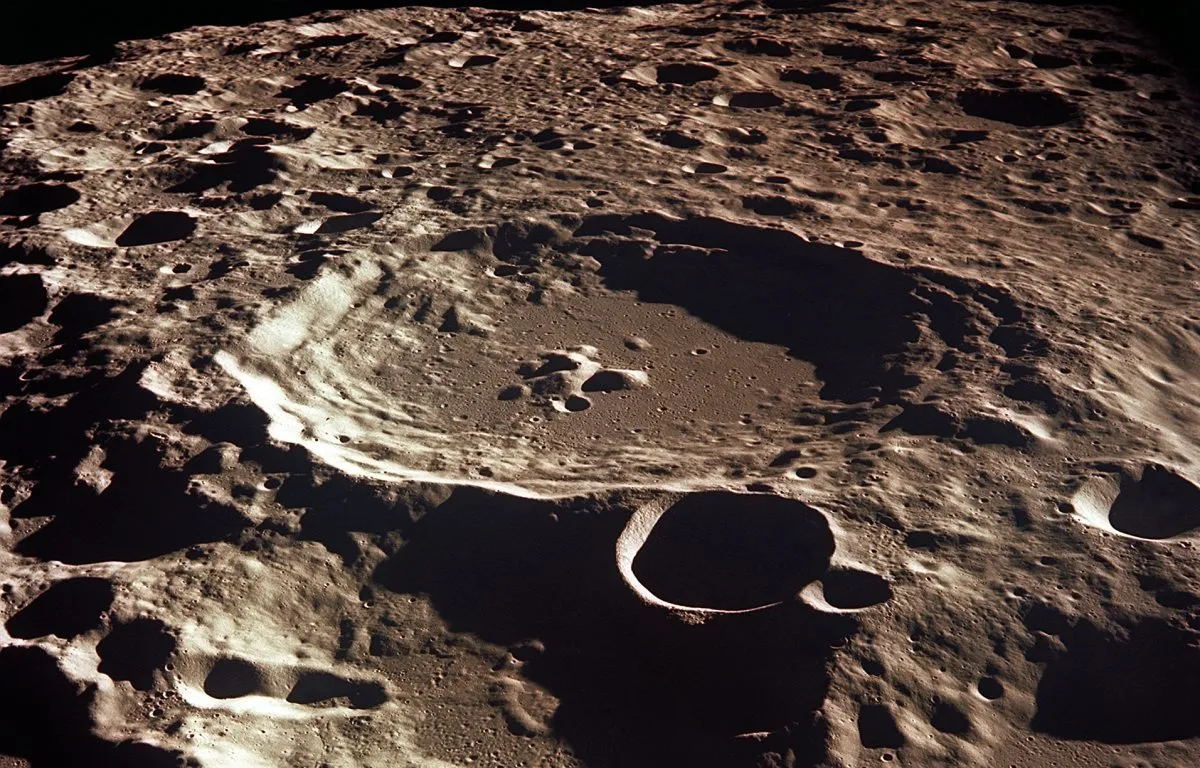
Slowly, the blurry shape of Armstrong emerged into view, accompanied by the astronaut’s voice narrating his descent.At the bottom of the ladder, the world held its breath as Armstrong paused for a moment before planting humanity’s first footprint on another world with the words, “That’s one small step for [a] man, one giant leap for mankind.”
Twenty minutes later, Aldrin joined Armstrong on the surface, proclaiming it to be a, “Beautiful view. Magnificent desolation.”
The lunar landscape appeared truly alien to the astronauts. “I was surprised by the apparent closeness of the horizon,” Armstrong said to NASA historians years later.
With no atmosphere to diffuse the light, judging distance on the Moon became difficult and the dust behaved very oddly.
“I was surprised by the trajectory of dust that you kicked up with your boot… You never had a cloud of dust there.”
The astronauts weren’t there to admire the view, however; they had a job to do. Armstrong’s first task was to collect a bag of dust as a contingency, in case an emergency evacuation prevented them from a scheduled collection of rock samples.
Next, they deployed the science experiments, including an instrument examining the solar wind and a reflector which could be used to measure the distance between Earth and the Moon to within an accuracy of centimetres.
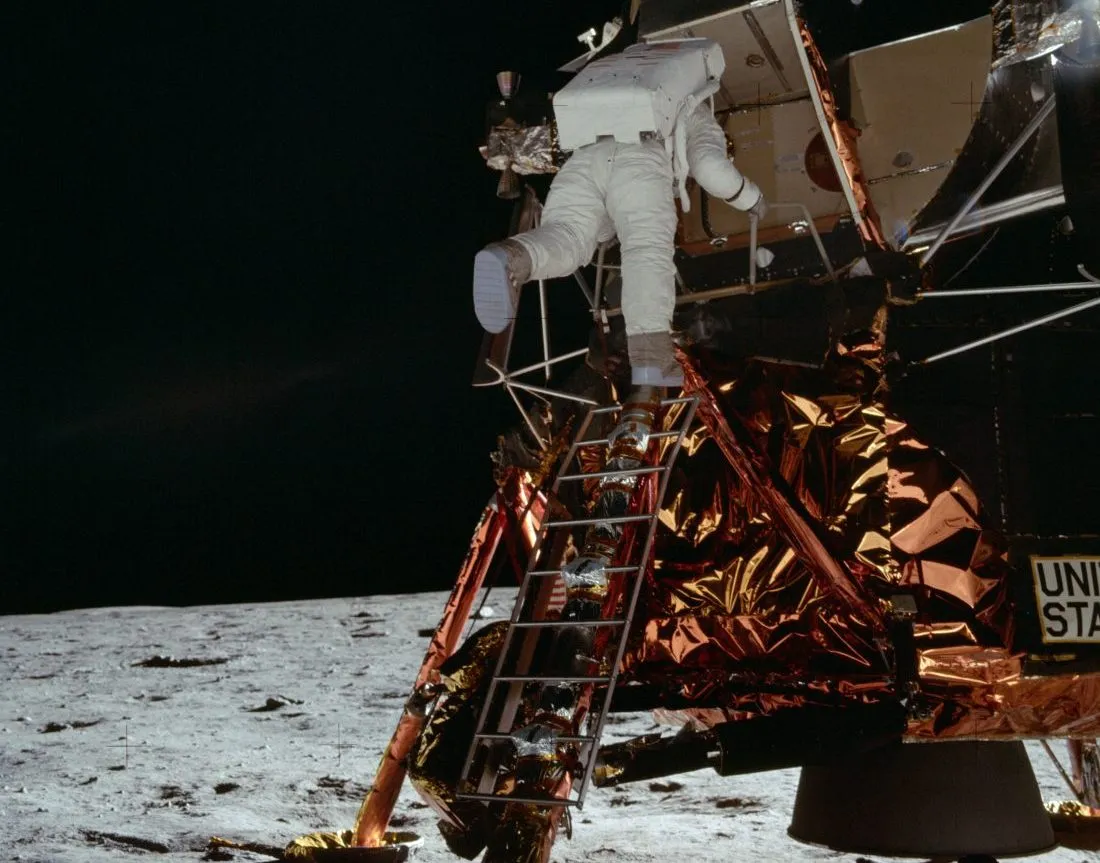
Time to go
Afterwards Armstrong and Aldrin set up a plaque, stating that they ‘came in peace for all mankind’, before planting a US flag to highlight which nation had achieved the historic feat.
Unfortunately, the ground was so hard that Armstrong couldn’t get the pole in more than a few inches, and it fell over when they fired the ascent engine on leaving the lunar surface.
When the time came to collect rock samples, the mission was rapidly approaching its end.
The pair grabbed what Moon rocks they could, throwing them into sample bags with no time for full cataloguing, then hoisted them back onto the lander.
I am alone now, truly alone, and absolutely isolated from any known life. I am it. If a count were taken, the score would be three billion plus two over on the other side of the Moon, and one plus God knows what on this side.
Michael Collins, Apollo 11 Command Module Pilot
After just two hours on the surface, the pair climbed back into Eagle and resealed the hatch. Humanity’s first foray onto another world was over.
Back in orbit, command module pilot Michael Collins had been keeping Columbia running, orbiting the Moon 12 times as he waited for his colleagues to return.
In his memoir, Carrying the Fire, he recalled those few moments every orbit when he passed behind the Moon and lost contact with Earth: “I am alone now, truly alone, and absolutely isolated from any known life. I am it.
"If a count were taken, the score would be three billion plus two over on the other side of the Moon, and one plus God knows what on this side.”
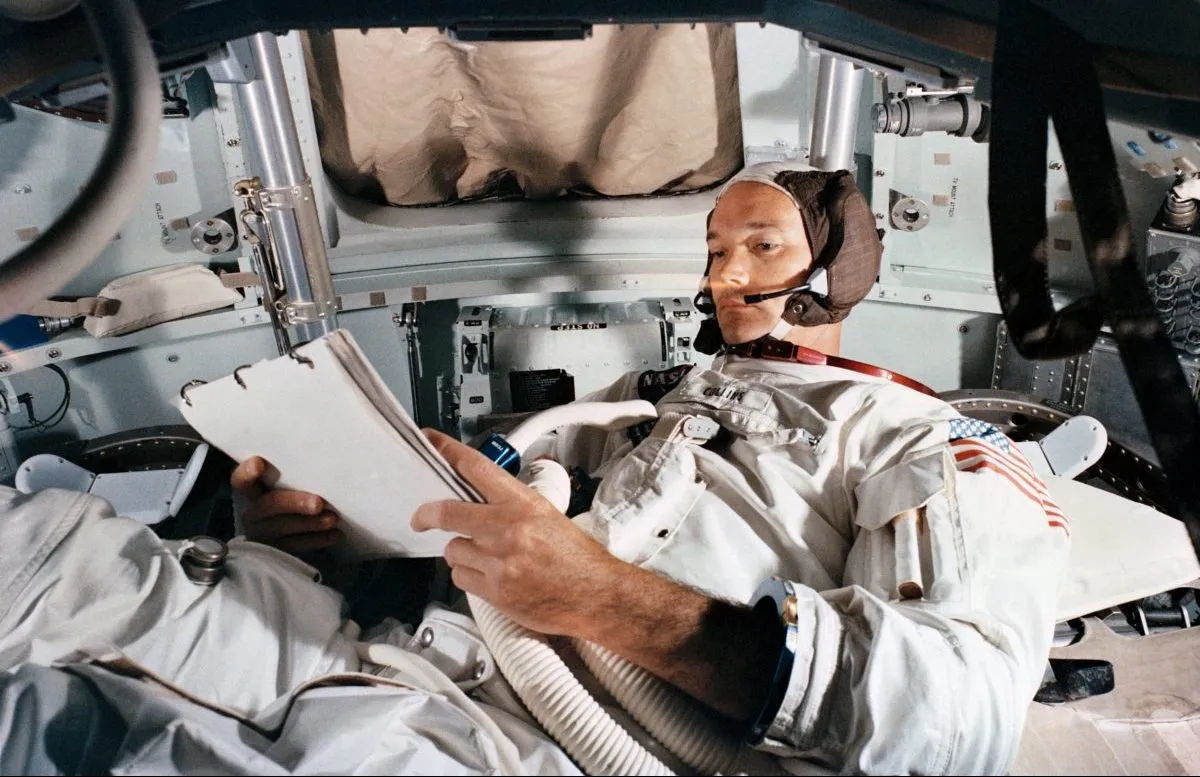
Aldrin and Armstrong left the lunar surface 21 hours and 38 minutes after landing, and reunited with Collins to begin the journey home.
Three days later, on 24 July, the capsule splashed down in the Pacific off the coast of Hawaii, and was picked up by the USS Hornet.
However, rather than receiving a hero’s welcome and red-carpet treatment, the trio were doused with disinfectant and locked in quarantine for three weeks in case any dangerous Moon bugs had hitchhiked home with them.
President Nixon conveyed the feelings of the world as he spoke to the crew through a window.
“It has only been eight days,” he said. “Just a week, a long week. But this is the greatest week in the history of the world since the Creation. The world is bigger, infinitely.”
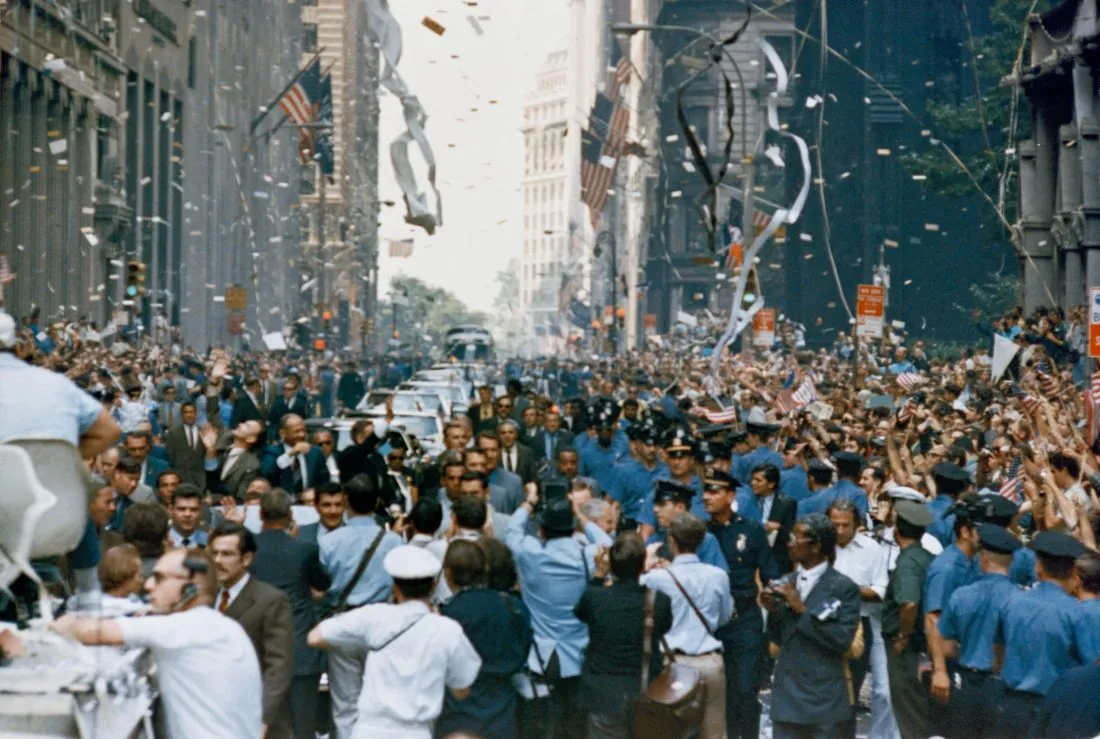
Meet the astronauts
Commander: Neil Armstrong
Armstrong was born on 5 August 1930. He entered the US Navy in 1949, later becoming a test pilot. He joined the second group of astronauts in 1962, making his first spaceflight on Gemini 8. He left NASA after Apollo 11
to become a teaching professor at the University of Cincinnati. He passed away on 25 August 2012.
Lunar module pilot: Edwin ‘Buzz’ Aldrin
Born on 20 January 1930, Aldrin spent his early life in the US Air Force before joining NASA. He took part in Gemini 12, where he conducted a five-hour EVA. He left NASA in 1971 but remains a space advocate. He is involved in promoting the exploration of Mars, having developed plans which could accomplish the feat.
Command module pilot: Michael Collins
Born on 31 October 1930, Collins initially joined the United States Air Force. He became a test pilot before joining NASA in 1963. Collins flew on Gemini 10 in 1966,
a three-day mission which practised rendezvous in orbit and conducting EVAs. After Apollo 11 he became director of the Smithsonian Institute’s Air and Space Museum.
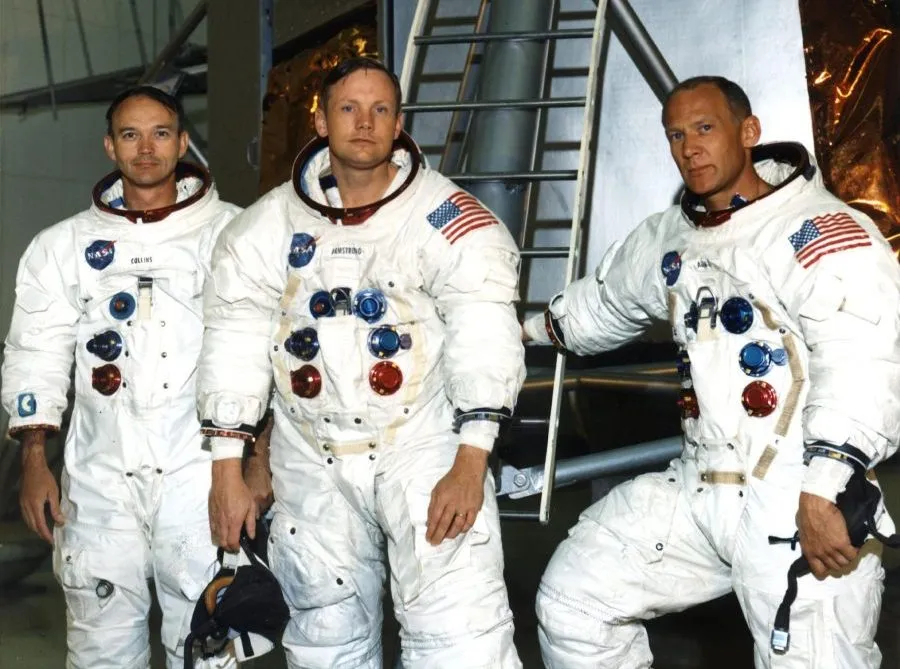
Apollo 11 timeline
All times are UT
16 July 13:32 Apollo 11 takes off from Cape Kennedy, Florida.
19 July 17:21 After three days in transit, the crew arrive in lunar orbit.
20 July 17:44 Eagle undocks from Columbia and begins its descent to the Moon’s surface.
20 July 20:17 A rod on the lunar module’s leg indicates that Eagle has touched down. The landing site is named Tranquillity Base.
21 July 02:39 Buzz Aldrin struggles to open the hatch, and peels back the seal to release pressure inside the lander.
21 July 02:56 Armstrong steps onto the lunar surface stating, “That’s one small step for [a] man, one giant leap for mankind.”
21 July 05:11 Aldrin and Armstrong close the hatch after returning to the lunar module.
21 July 17:54 Eagle takes off from the Moon’s surface to reunite with Columbia in orbit.
24 July 16:50 Splashdown in the Pacific Ocean. Crew rescued by USS Hornet and confined to quarantine.
